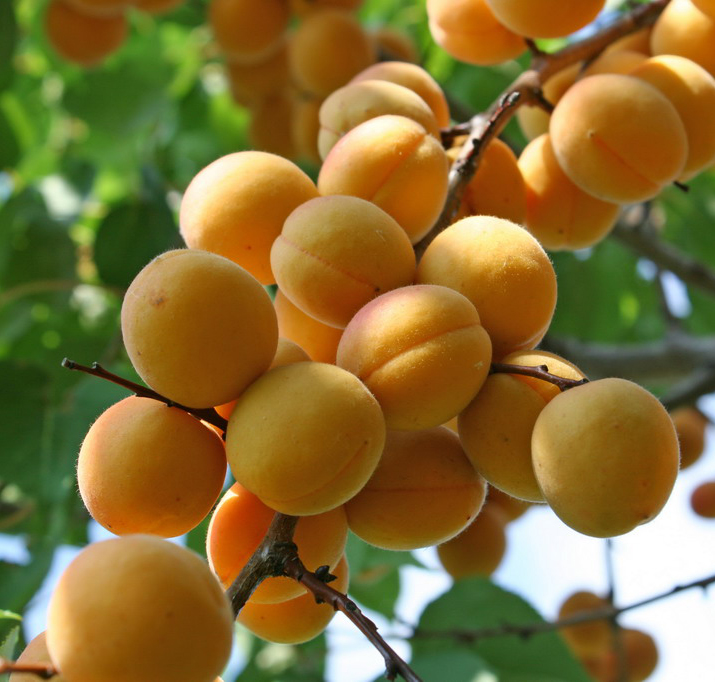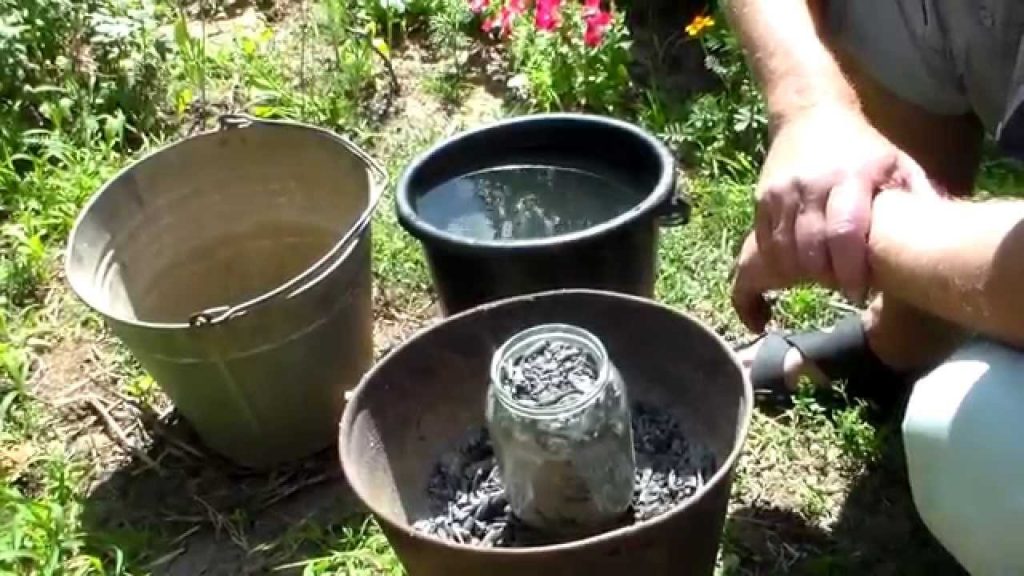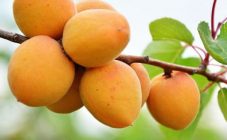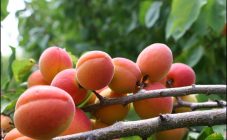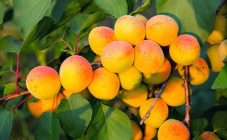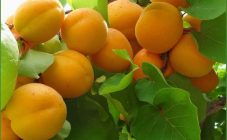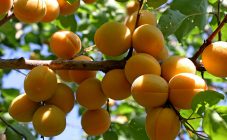Content:
Apricot is everyone's favorite summer sunny fruit. This fruit is grown on their backyards and dachas by gardeners in different parts of the country of Russia. One of these amateur gardeners even bred a good variety - the Zhigulevsky souvenir. V.V. Bessmertnov obtained it by sowing apricot seeds of Central Russian varieties.
Varietal features
Description of apricot variety Zhigulevsky souvenir is as follows:
- The tree is medium-sized, 3-4 m high.
- It grows relatively quickly, forms a crown of a pyramidal or round shape, of medium density.
- Shoot bark is smooth, light brown.
- The leaves are large, rounded at the base, with a pointed tip. The leaf blade is flat, light green, with slight pubescence.
- The petiole is medium, pigmented.
The inflorescences consist of two white-pink flowers. Bloom begins in May.
The yield is high - up to 45-50 kg can be harvested from one tree. The fruits have the following characteristics:
- They are round-oval in shape, large - 21-35 years (under favorable conditions, specimens of 50 years are found).
- The fruit is orange in color with a reddish blush on the sunny side.
- The pulp is orange, dense, sweetish taste with noticeable sourness.
- The skin is medium, without pubescence, it is difficult to separate from the pulp.
- The stone is large, freely located inside the fruit and can be easily removed.
The variety is early maturing, the harvest can be harvested in the third decade of July. The tree enters the fruiting phase in 4-5 years. The fruits have good marketable and transportable properties. A crop taken a little unripe can be stored for a week without loss of marketability.
Disease immunity is high, drought - and frost resistance is good. The tree is self-fertile, no pollinator is required, but if an apricot of a different variety grows nearby, this will only have a positive effect on yield.
Agrotechnics
Soils and location
Apricot requires a sunny position, otherwise it will not give a good harvest. And the fruits with a lack of sun will be sour. It is not recommended to define a place for it between buildings. But if the wall is on the north side, then it will keep the heat-loving tree from the cold north wind. The proximity of groundwater, stagnant melt water in spring is unacceptable. If the site is located in an unfavorable place, where the groundwater is located above 1.5 m, then good drainage or elevation is needed to plant the apricot.
Soils are preferable sandy loam or loamy. Heavy clay soil will need to be well diluted with sand and humus, but in this case, good development of the plant cannot be guaranteed. The required acidity is not higher than 7.5. On acidic soils on trees, gum flow and bone cracking are observed. To neutralize the soil, you need to add dolomite flour or lime.
Landing
Seedlings with an open root system can only be planted in spring. When buying, you should pay attention to the condition of the roots. If they are cut too short, the tree may not take root. For the same reason, you should not trim the roots before planting. Seedlings in containers can be planted at any time: from spring to mid-autumn. The distance between trees should be at least 3 X 4 m, since one plant needs a nutritious area of about 12 square meters. m.
The soil for planting is prepared in the fall.To begin with, the soil is well dug, to a depth equal to two bayonets of a shovel, freeing it from weeds. Immediately add a bucket of humus, 20 g of potassium chloride and 30 g of superphosphate. You can also dig a planting hole in the fall, so the soil in it will warm up faster in the spring.
The pit should be at least half a meter deep and 80 cm in diameter. Pour 1-2 buckets of water at the bottom of the hole. The root collar is left several cm above the ground level, its deepening is dangerous for the tree and can lead to death. After the roots are covered with earth (you need to make sure that there are no voids left), the seedling is again watered abundantly. Immediately after planting, you can trim the shoots by a third for better branching. The next year, a young tree can give the first flowers, but it is best to remove them without allowing the ovaries to form. Thus, the plant will give strength to growth, which will only have a positive effect on the future harvest.
Care
Further care of the crop consists in timely watering, feeding, pruning and protection from pests.
It is necessary to fertilize the apricot in the spring with nitrogen fertilizers, urea in the amount of 40 g is suitable. The first time feeding is applied before flowering. If there are many ovaries, but they fall off in large quantities, then the tree should also be fertilized. After harvesting the fruits or in September, you will need to feed with superphosphate in the amount of 150 g and potassium salt - 100 g. Before the onset of frost, organic matter should be added. The culture is sensitive to the deficiency of microelements in the soil, therefore, the introduction of complex mineral fertilizers should not be ignored. But this should be done in moderation, observing the dosage indicated on the package, otherwise you can harm the tree. Nitrogen is not introduced in autumn. If the soil is rich, and all the necessary substances were added during planting, then further fertilizing can be applied once every three years. Wood ash is considered a valuable fertilizer; it is applied in the spring at the rate of 0.5 buckets per apricot tree.
The culture requires watering about once a week during the period of active growth of shoots, flowering and filling of fruits. The last time you need to water the apricot is at the end of June to avoid cracking the fruit. An exception can be made during drought. Watering is also required after harvest and before the onset of winter. Water consumption for one irrigation is about 40 liters of water per tree. If there is stagnant water on the site, then measures must be taken to drain it, since excess moisture can destroy the apricot. The culture tolerates moderate drought more easily than flooding.
Experienced gardeners are advised to carry out rationing of the crop: remove, if possible, part of the fruit set. The fact is that apricot does not have the property of self-regulation of fruiting. As a result, one year the branches will break from the abundance of fruits, the other year will be poor. If you cut off some of the ovaries in time, the rest of the fruits will grow larger and sweeter, and the tree will bear fruit evenly every year.
Pruning
Pruning is divided into: shaping, rejuvenating and sanitary.
- Formative pruning will help create a spreading crown that will be well lit by the sun. Such a tree is easy to harvest, and the excess sun will provide the sweetness and size of the fruit. They begin to form the crown in the spring of the year following planting. Shoots that grow vertically upwards should be pruned for branching. If the branch grows unsuccessfully (inside the crown or crooked), it is better to completely remove it.
- Anti-aging pruning begins when the tree stops growing actively. Then the old branches are removed, only carefully, no more than a quarter of the total mass of the crown. Pruning too much can shock the plant and take a long time to recover.
- Sanitary pruning is done annually in the fall. At the same time, shoots damaged by diseases are removed, which it is advisable to immediately burn along with fallen leaves in order to destroy possible foci of diseases and larvae of pests.
Pests and diseases
Young trees like to gnaw mice and hares, so the bole should be wrapped in a special rodent net.The trunk is protected from wintering larvae and sunburn with whitewash. The souvenir is resistant to the main diseases, and preventive measures are recommended against the main pests. Digging the trunk circle, whitewashing the trunk, destroying infected fruits and leaves will help to avoid problems with insects that parasitize the apricot.
Advantages and disadvantages of the variety
Apricot Zhigulevsky souvenir has the following advantages:
- high frost resistance of the variety and good adaptive qualities;
- high, relatively stable yield;
- fruits are large, tolerate transportation well and are of universal importance.
The only drawback is the average sweetness and tangible sourness of the fruit.
